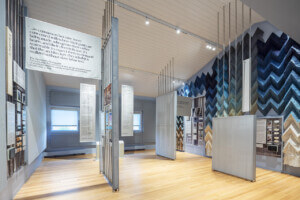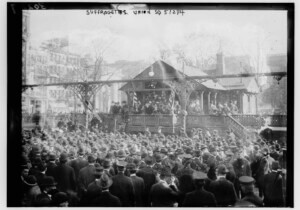Workers in Snøhetta’s U.S. offices have voted against unionization, 35-29. Although it was initially reported that the vote was 29-28 against unionization, the National Labor Relations Board (NLRB) revealed that they had omitted ballots from the firm’s San Francisco office in the final count. Snøhetta has two offices in the U.S., the other being in New York. The uncounted votes from the San Francisco office skewed 6-1 against unionization, raising questions over discrepancies in unionization positions between the firm’s U.S. offices.
As AN previously reported, workers in the Norwegian firm’s two U.S. offices filed a petition to unionize with the NLRB in May. The result calls-back to failed unionization attempts at SHoP, though workers there never got to an election as unionization efforts slowed. Architectural Workers United (AWU) has been working to organize architects in the U.S., including in the recent efforts at Snøhetta, and the successful unionization drive at Bernheimer Architecture last year. While unionization in the architecture industry is almost non-existent in the U.S., in Norway over 5,700 architects, landscape architects, interior architects, designers, and planners are members of the Norwegian Union of Architects, which was founded in 1911.
Union supporters at the prominent architecture firm Snohetta have fallen just short in their effort to become the first private-sector architecture firm to win a union election in almost 100 yrs. Vote was 29-28. They had hoped to accelerate an industrywide organizing campaign. 1/
— Noam Scheiber (@noamscheiber) July 7, 2023
A spokesperson for Snøhetta told AN: “After a months-long campaign by the Machinists to unionize Snøhetta in the U.S., the majority of employees made it clear that they opposed this direction for our workplace. We look forward to working together as one studio to continue building on our legacy of creativity and collaboration.”
In a statement shared on Instagram, the AWU said that Snøhetta had retained Stinson LLP, a union-busting law firm, to drive opposition to unionization among workers.
View this post on Instagram
Full-time and regular part-time Snøhetta employees in the U.S., “including all designers, architects, project leaders, and operations staff,” would have been included in the International Association of Machinists and Aerospace Workers (which is part of America’s largest federation of unions, AFL-CIO). “Managers, supervisors, partners, directors, financial officers, executive assistants, and confidential employees, and all accounting, billing and human resources personnel” would have been excluded, which follows normal practices. The petition to unionize moved to a vote after the firm opted not to voluntarily recognize the union.
Unions for architectural workers are common in many countries: in France, workers are organized in two unions, Syndicat d’Architecture (co-founded by a very young Jean Nouvel), and Union Nationale des Syndicats Français d’Architectes; in Portugal, the Sindicato dos Trabalhadores em Arquitectura represents architectural workers; in Australia, Professional Architects Australia represents industry workers; in Turkey, the Union of Chambers of Turkish Engineers and Architects represents architects and has been stripped of power under Recep Tayyip Erdoğan’s administration. This is not to mention unions in other “cultural” fields, including at museums like the Whitney and the Guggenheim.
While the failed vote at Snøhetta is a loss, that does not mean that momentum is dead, that workers at other firms are not trying to unionize, or that support around unionization within the larger industry will stall.











